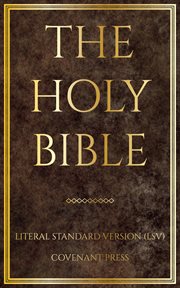Details
PUBLISHED
Made available through hoopla
DESCRIPTION
1 online resource
ISBN/ISSN
LANGUAGE
NOTES
THE LSV IS FINALLY HERE: A BRAND NEW, LITERAL, EASY-TO-READ TRANSLATION OF THE COMPLETE HOLY BIBLE-BOTH OLD AND NEW TESTAMENTS. - A modern, literal, word-for-word (formal equivalence) English translation of the Holy Scriptures utilizing English word rearrangement when necessitated for readability. The LSV is the most literal translation of The Holy Bible, with significant improvement over previous literal translations, including Robert Young's excellent Young's Literal Translation. - Preservation of verb tenses wherever possible. - Utilization of the transliterated Tetragrammaton in the Old Testament. All uppercase LORD is, used in the New Testament when a reference to YHWH is likely. - Removal of many Hebrew and Greek transliterations; remember, transliterations are generally not translations. - Unlike most translations, justified typographic alignment consistent with the style of the original Hebrew, Aramaic, and Greek biblical autographs. The ancient caesura mark is, used for easy readability of poetic literature such as the Psalms. - Inclusion of the verses found in older English translations such as the King James Version (KJV) that are not, found in many modern translations; and inclusion of the alternative LXX Genesis chronology set next to the MT. These are contained within bolded double brackets for distinction. - Capitalized pronouns and other nounal forms, when referring to God, Christ, or the Holy Spirit. References to the Messenger of the LORD are also, capitalized, when the subject appears to be a clear reference to God or the Messiah (as found in translations such as the NKJV). The goal of any good translation is to produce a readable text that preserves the original autographic meaning and comes as close as possible to translating, word-for-word, manuscripts that accurately represent the original writings. It's with this goal in mind that the Literal Standard Version (LSV) was written-a modern, yet literal English translation based upon the most prolific texts: the Masoretic Text (MT) for the Old Testament and the Textus Receptus (TR) and Majority Text (M) for the New. However, in certain, specific instances other manuscript versions and text-types are used where the evidence seems incontrovertible (e.g., the LXX and DSS in the Hebrew and Aramaic; the Alexandrian in the Greek)
Mode of access: World Wide Web







